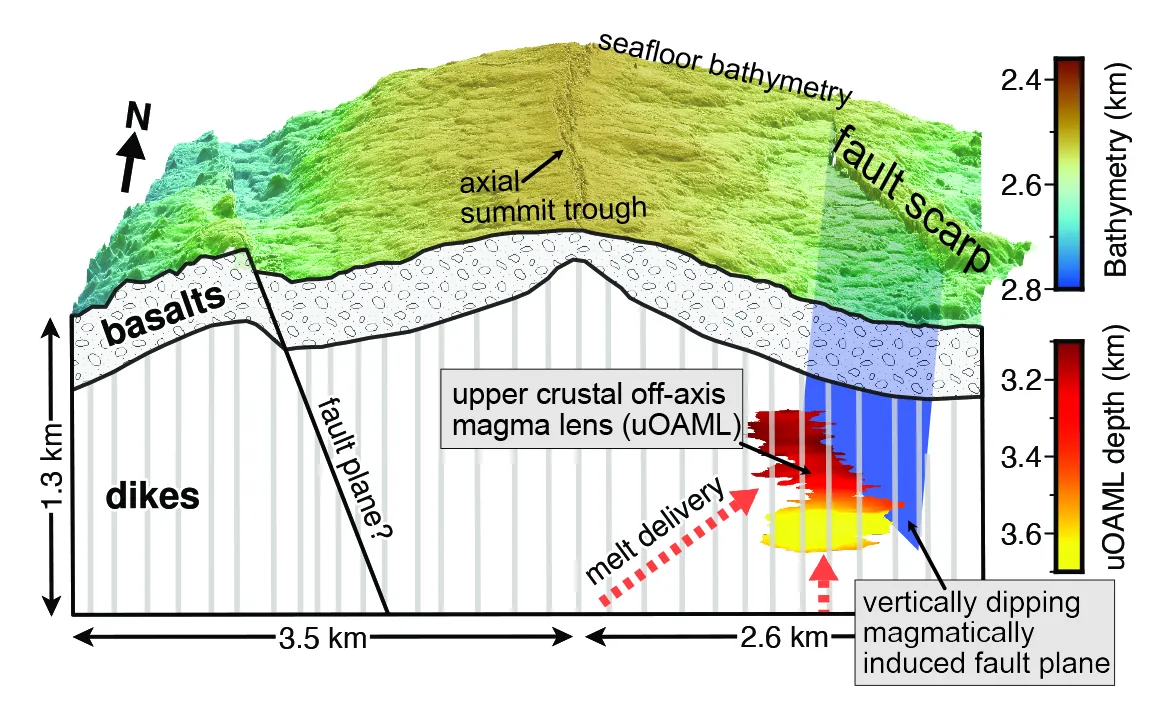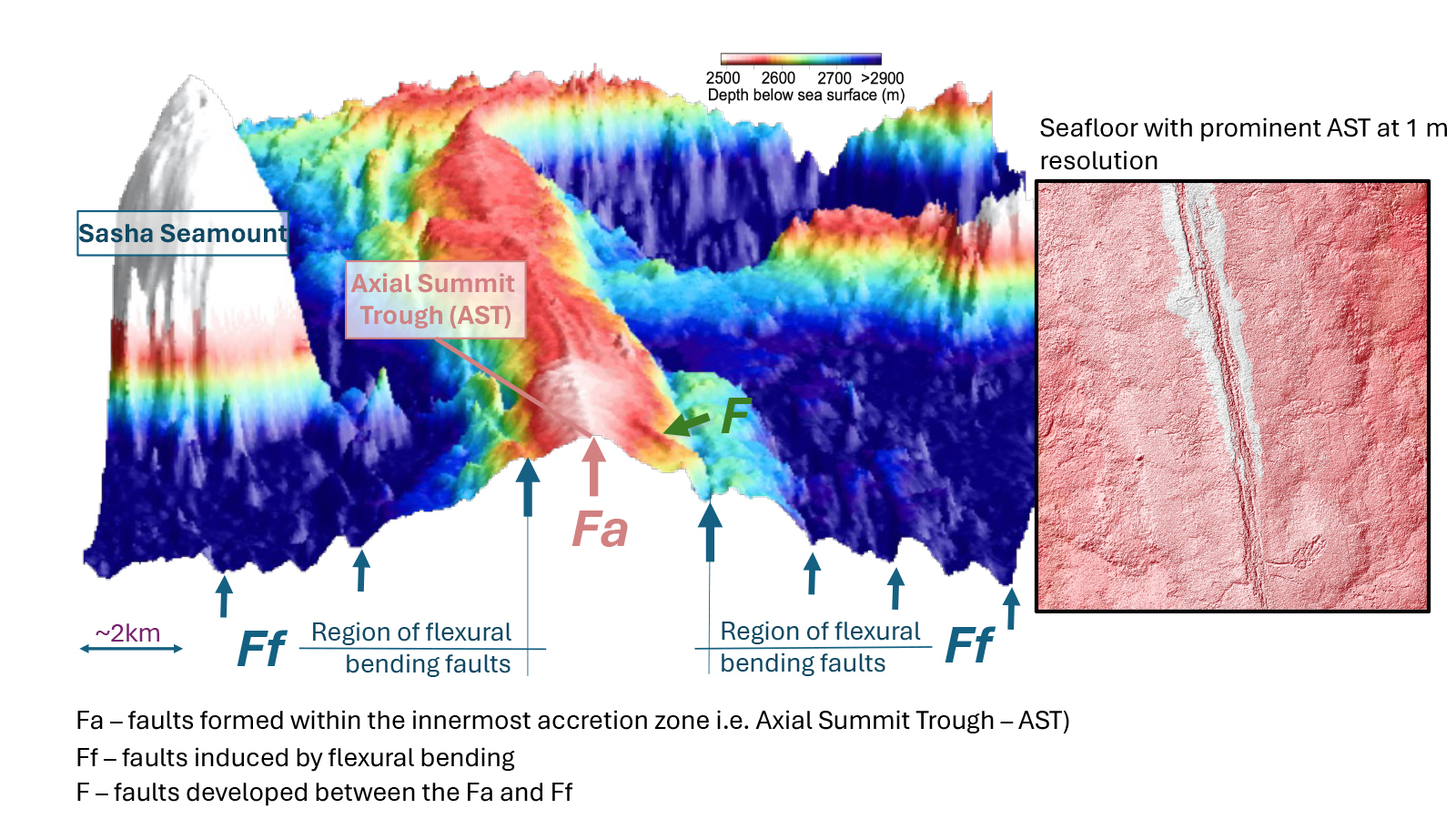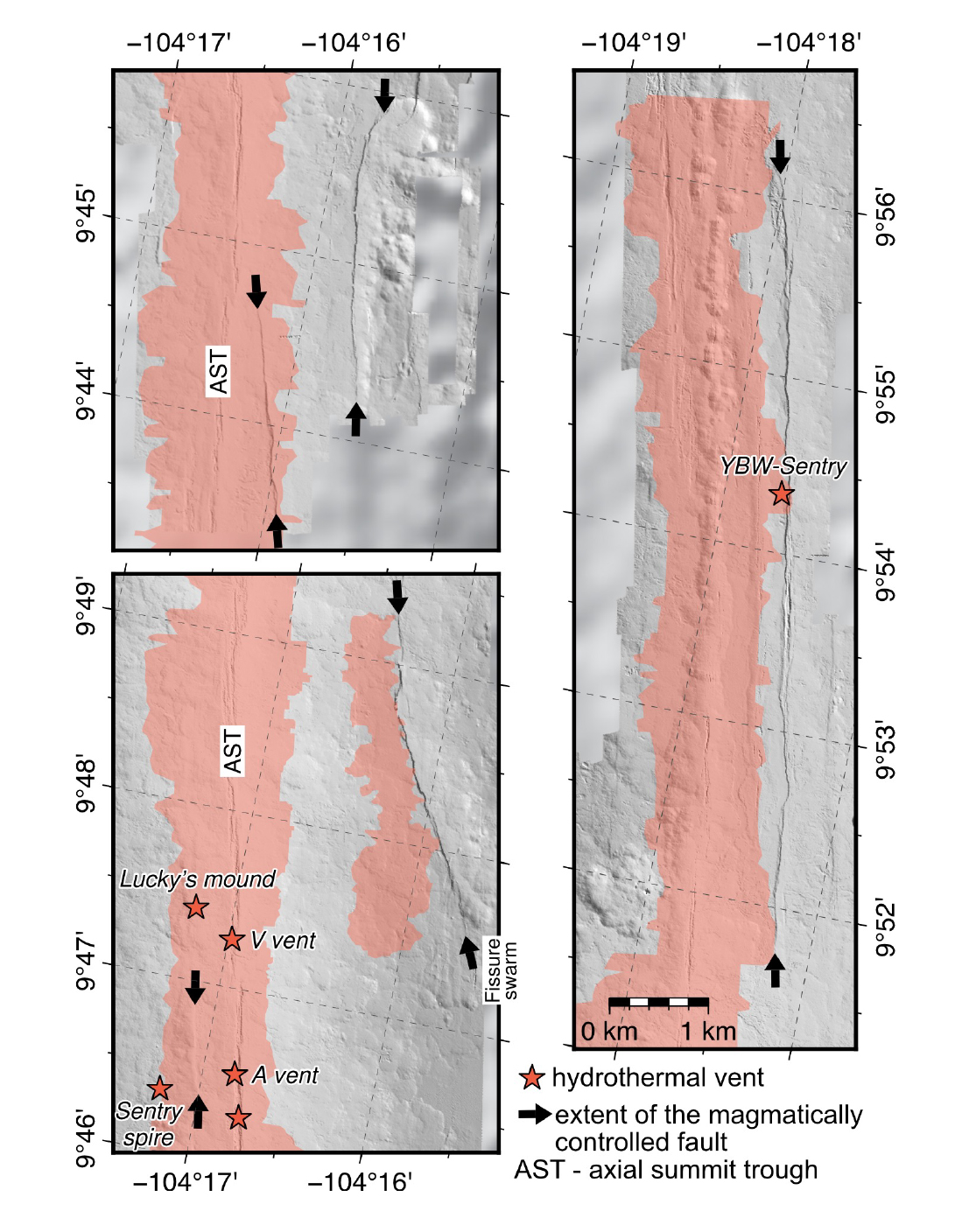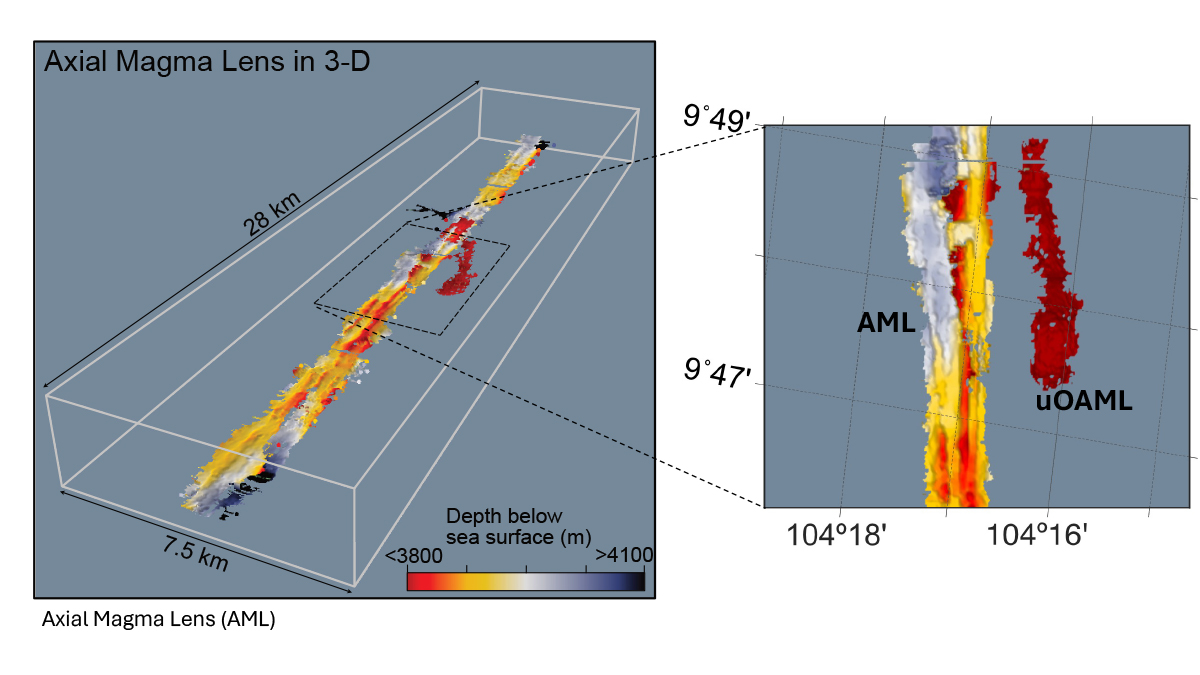Revealing unsuspected faults of magmatic origin
Published by Adrien,
Source: Proceedings of the National Academy of Sciences
Other Languages: FR, DE, ES, PT
Source: Proceedings of the National Academy of Sciences
Other Languages: FR, DE, ES, PT
Follow us on Google News (click on ☆)

Schematic view of a fault formed and controlled by a magmatic lens.
Researchers have identified these faults near the axis of the East Pacific Rise at 9°50'N. Unlike typical faults formed by the cooling of the lithosphere, these result from intense magmatic activity emanating from the axial magmatic lens located beneath the ocean floor.
Near the ridge axis, these faults form as magma ascends through dykes. Further away, at over 6,600 feet (2000 meters), the lithosphere cools and deforms, creating other faults. Between these two zones, mysterious faults puzzle scientists due to their uncertain origin.

3D bathymetry of the ocean floor at the East Pacific Rise 9ºN, showing the three dominant fault mechanisms: dykes in the axial zone (Fa), lithospheric deformation (Ff), and magmatic origin faults (F). The inset represents a bathymetric close-up of the studied region with a highly developed axial summit trough, at a resolution of 3.3 feet (1 meter).
Using ultra-high-resolution seismic and bathymetric imaging techniques, researchers observed the precise alignment of these faults with underlying magmatic bodies, suggesting a complex interaction between tectonics and magmatism.
This discovery challenges current models of tectonic deformation, showing less intense activity than expected but heavily influenced by magma. The images reveal weaker deformation, but with marked tectono-magmatic interactions.

The shape of magmatic bodies (in pink) is superimposed on the bathymetry (in gray) for three different regions. The geometry of fractures in the ocean floor (marked by black arrows) closely corresponds to the morphology of magmatic bodies, suggesting a strong tectono-magmatic relationship.
These new data offer an unprecedented view of oceanic crust formation and the processes at work in the depths of our oceans. Researchers are now more motivated than ever to explore these phenomena in detail.

3D view of the axial magmatic lens from high-resolution seismic data collected at the East Pacific Rise. The inset represents a close-up highlighting the main axial magmatic lens (AML) and the off-axis upper crustal magmatic lens (uOAML).